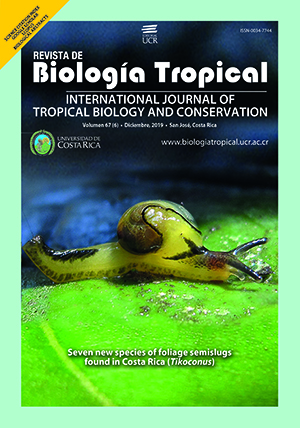Abstract
Because of the influence of different human activities, rivers and their associated biodiversity are under stress. The aim of this study was to evaluate the diversity of aquatic macroinvertebrates of the Jordán River and its relation to water quality. Mining, water harvesting, livestock, agriculture, recreation and illegal occupation of the territory; take place in the evaluated section (5 650 m). A sampling site was established at 1 173 m.a.s.l. (E1), here the river receives wastewater. The second, at 1 069 m.a.s.l. (E2) was set up before the intake of an aqueduct. And the third, at 1 019 m.a.s.l. (E3) after the inlet pipe. Concentrations of physicochemical variables (n = 15) were measured. Aquatic macroinvertebrates were collected in gravel, pebbles and macrophytes using Surber nets (0.36 m2, 500 µm), a screen net (1.6 m2, 350 µm) and a D-net (0.9 m2, 500 µm). The assemblage structure was assessed using abundance categories. The diversity of aquatic macroinvertebrate and physicochemical variables were associated using canonical correspondence analysis (CCA). The physicochemical variables showed that E3 was the most contaminated site. There were 9 orders, 23 families and 31 taxa. E3 had the lowest richness and in E2 Rhagovelia was dominant. The CCA showed that variables that have the greatest influence on the diversity of macroinvertebrates are oxygen, BOD5, Total Dissolved Solids (TDS) and turbidity. It is concluded that the diversity of macroinvertebrates decreases with increasing organic matter possibly due to sewage and flow decrease.
##plugins.facebook.comentarios##

This work is licensed under a Creative Commons Attribution 4.0 International License.
Copyright (c) 2019 Duberly Mosquera Restrepo, Enrique Javier Peña Salamanca






